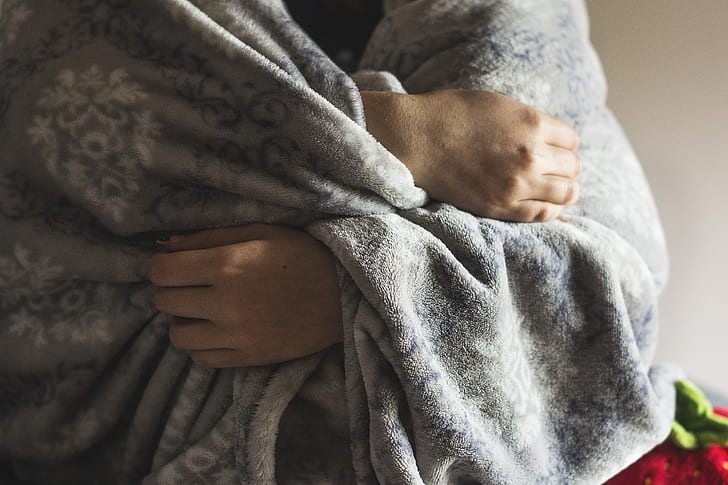As the biting cold of winter descends upon us, the struggle to stay warm becomes a daily battle. Most advice on staying cozy tends to overlook a crucial detail – the fact that we must venture outdoors and face the cold head-on. In this exploration, we delve into the science of thermoregulation, uncovering strategies to keep our bodies warm, with a particular focus on the often-neglected extremities – our hands and feet.
The Three Pillars Against the Cold
In broad strokes, three key strategies form the foundation of staying warm. The first two involve clothing: layering up with multiple thin garments (more effective than a single thick one for stable thermal transitions) and covering our heads. While the latter isn’t solely about heat loss, it impacts physiological cold indicators, hindering mechanisms like shivering that help generate warmth.
The third strategy is even more fundamental: staying active. Physical activity elevates body temperature, provided we don’t generate excessive heat triggering mechanisms like sweating or vasodilation. These seemingly simple interventions pack the most punch in keeping us warm. However, when it comes to retaining heat, a closer look at our hands and feet is warranted.
Additionally, for those who love cozy teddy bear slippers, you might find useful tips on maintaining their warmth and cleanliness by learning how to wash teddy bear slippers at shoetimesusa.com’s insightful guide.
Why Hands and Feet?
Understanding how our body’s heat maintenance mechanisms operate reveals why hands and feet take the brunt of the cold. As endothermic beings striving to maintain a temperature around 37 degrees Celsius, these mechanisms prioritize safeguarding vital organs, even at the expense of peripheral areas. Blood circulation provides a stark illustration – in response to a drop in basal temperature, blood vessels supplying the skin constrict, redirecting blood flow to the trunk, where vital organs reside.
Hands and feet, being less endowed with adipose tissue, emerge as the frontline in this thermal battle. Reduced blood circulation coupled with minimal insulating tissue makes them particularly susceptible to heat loss, explaining why these extremities are the first to register the cold.
Consider improving overall insulation in your living space with the expertise of a reliable insulation company to ensure optimal temperature regulation and energy efficiency.
Defending the Hands

Applying the same logic of opting for simple interventions with potent heating potential, the primary counsel for warm hands is straightforward – wear gloves or mittens if fingertip dexterity isn’t paramount. Material matters less; what’s crucial is keeping them dry. Moisture, especially in cold conditions, compromises insulation, contributing to further cooling.
Equally vital is minimizing the gaps between gloves and other clothing layers, not only for exposed skin but also because these openings become conduits for cold, sapping warmth from hands and arms. This is particularly true if gloves are not excessively snug. Given the hand’s considerable mobility, allowing some room prevents the expulsion of the warm air cushion within the glove due to movement-induced pressure.
The Feet Saga
Foot warmth, aside from addressing various conditions, follows a similar logic. The foremost rule is to avoid heat loss – hence the obvious advice of not going barefoot. Even indoors, it’s prudent to wear footwear or socks, debunking the myth surrounding the supposed ill effects of sleeping with socks on.
In fact, donning socks at night is a stellar idea if feet tend to get cold. For those seeking not only warmth but also style, consider exploring Custom Sock Lab, where comfort meets creativity to offer personalized solutions for cozy feet day and night.
Common-sense tips, like keeping feet, socks, and shoes dry or favoring wool and insulating materials over cotton (better suited for summer), align with practical wisdom. Yet, some less-obvious practices are often overlooked. Elevating your feet while sitting, resting them on a stool, or a similar surface makes sense considering floors are typically the coldest part of a room. Of course, this advice should be discarded in spaces with radiant floor heating.
And move them, vigorously. Yes, the body tends to restrict blood flow to hands and feet, but it’s not self-destructive. Purposeful movements, with specific exercises designed for this, prompt increased blood circulation to the extremities, providing a minor thermal boost. It’s a small yet effective measure that should never be underestimated.
Conclusion
In the face of winter’s relentless cold, mastering the art of staying warm demands a holistic approach, focusing not just on general tips but delving into the intricacies of extremity warmth. From the hands, clad in gloves, to the feet, comfortably shod and engaged in purposeful movement, our body’s natural defenses can be harnessed to defy the chill. In a world where warmth is not just a physical comfort but a psychological necessity, these simple yet often overlooked strategies pave the way for a toasty winter. So, let’s wrap up, gear up, and face the winter with warmth and wit!
